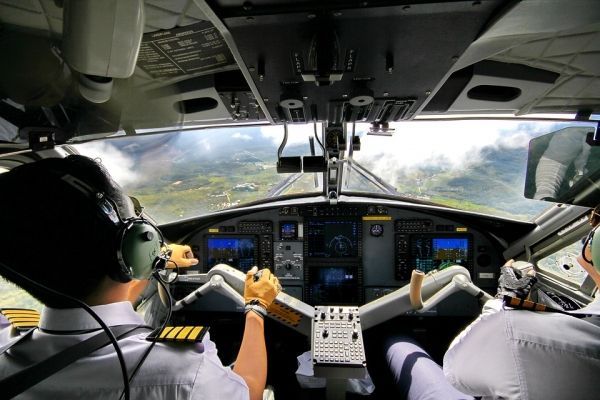Commercial airline pilots were significantly better at performing advanced maneuvers in a flight simulator when carbon dioxide (CO2) levels on the flight deck (cockpit) were 700 parts per million (ppm) and 1500 ppm than when they were 2,500 ppm, according to new research led by Harvard T.H. School of Public Health. The study indicates that CO2 levels directly affect pilots’ flight performance.
“Flying is safe, no question,” said Joseph Allen, assistant professor of exposure assessment science and principal investigator of the study. “The entire flight experience is designed around a culture of ‘safety first.’ Optimizing air quality on the flight deck must continue to be a part of that safety equation.”
The study was published online Wednesday, August 8, 2018 in the Journal of Exposure Science & Environmental Epidemiology.
Previous research led by Allen and colleagues found that, in office buildings, CO2 concentrations between 1,000 ppm and 2,500 ppm—levels once thought to be benign—negatively impact the cognitive function of employees. For the new study, they wanted to determine if higher CO2 levels on the flight deck would impair a pilot’s ability to perform advanced maneuvers and manage emergency situations, such as a single-engine failure during takeoff.
Read more at Harvard T.H. Chan School of Public Health
Photo Credit: Zorgist via Pixabay


